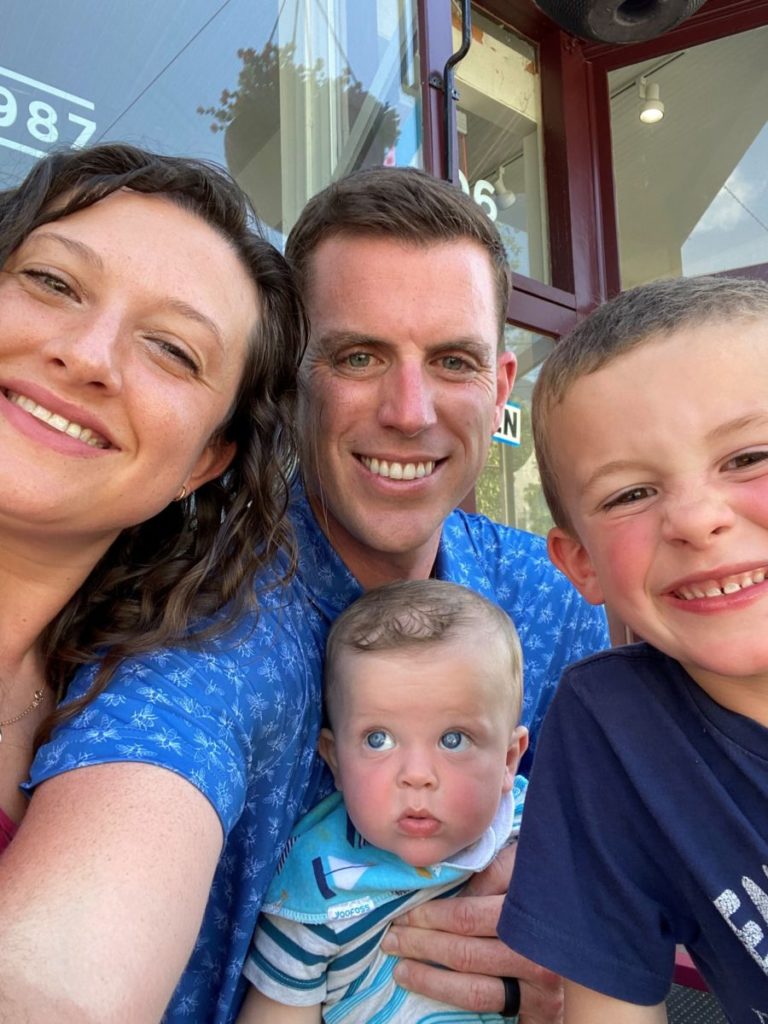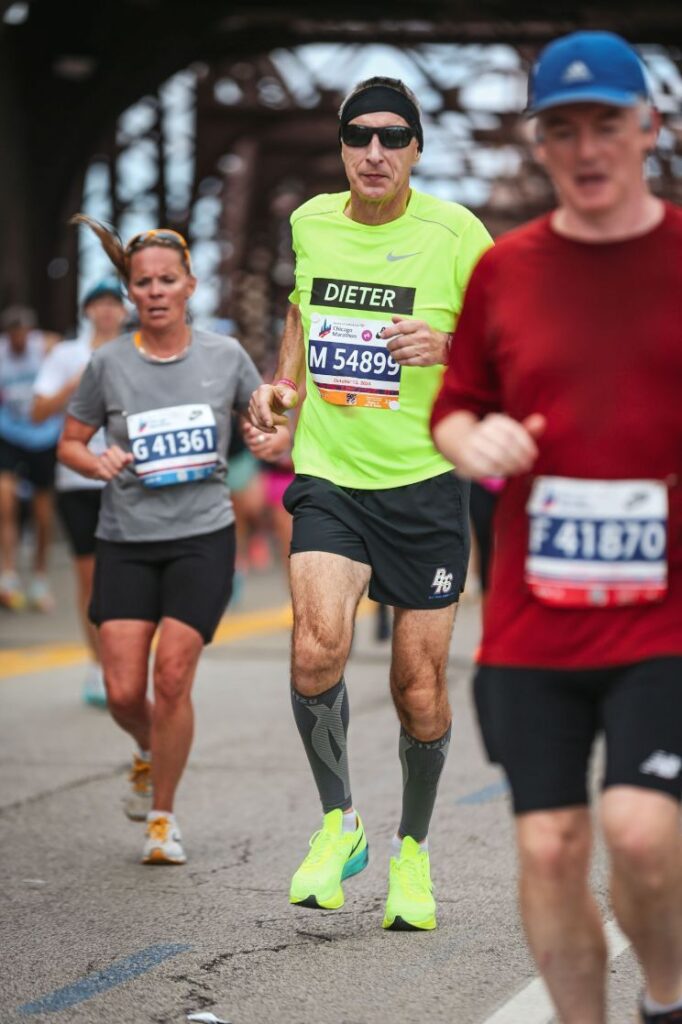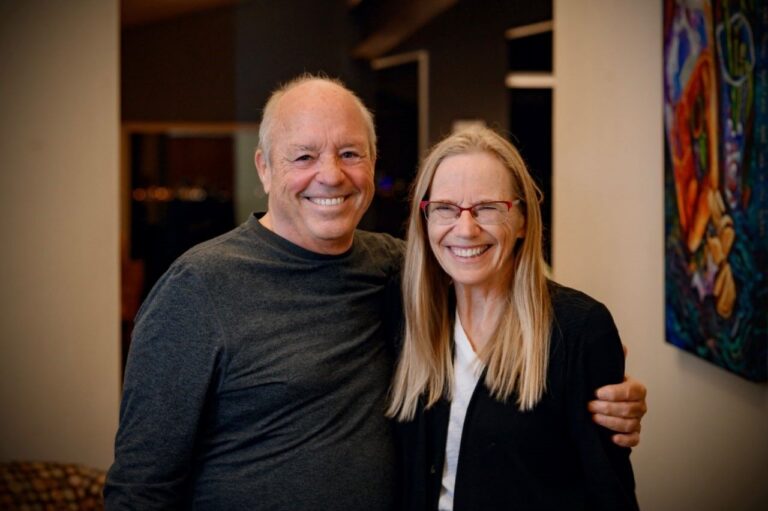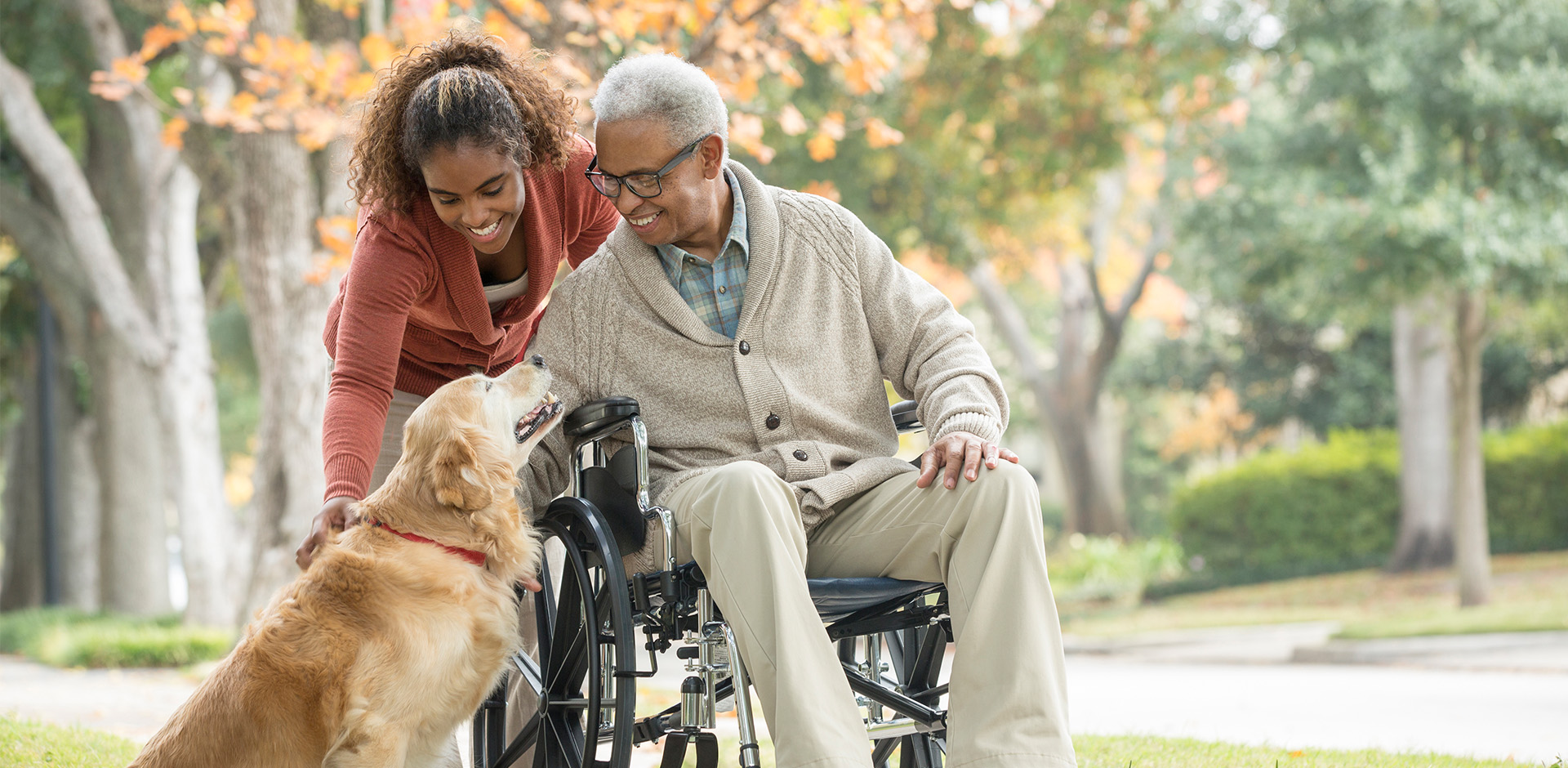Dana’s Story: My Personal Journey with Small Fiber Neuropathy
I’m writing this essay for a couple of reasons: as a way to bring more awareness to small fiber neuropathy (SFN) and explain its toll on me personally. The symptoms of small fiber neuropathy vary greatly person to person. But for me, it is chronic pain. I’ve been in pain ever since I can remember. Any time I am standing or walking, I’m in pain. Typically, my feet are throbbing in between those times as well from my previous activity.
I’m also writing this as a means of catharsis as the condition can cause such a sense of isolation and hopelessness. It’s tough to feel like no one understands what I go through each day. I am hoping, in writing about my journey, I can help others who are experiencing what I am going through.
What is Small Fiber Neuropathy?
Here’s a quick overview of small fiber neuropathy: It is a disorder that affects only the small nerve fibers in the skin, which is part of why the condition is so often misdiagnosed. Nerve tests such as the EMG only test the large nerves which are not affected by small fiber neuropathy, so I was told by several neurologists that my nerves were not the cause of my pain. It baffles me that so many neurologists, at least in my experience, are not familiar with small fiber neuropathy, even though hundreds of thousands of people in the world (at least) have it.
Small fiber neuropathy can be a progressive disease that typically begins in the feet and may travel upward through the body over time. Although the pain in my feet has definitely progressed, I’m thankful that it has not yet spread elsewhere on my body. Small fiber neuropathy may also affect many autonomic functions of the body, including temperature regulation, digestion, heart rate, breathing, and so many others. Little is known about its cause. Although it can be caused by factors such as diabetes or chemotherapy, many small fiber neuropathy cases are considered idiopathic (such as mine), meaning there is no known cause.
My Small Fiber Neuropathy Story
Beginning around middle school age, my parents started taking me to doctors to try and figure out why my feet hurt all the time. We started with a podiatrist. The podiatrist diagnosed me with plantar fasciitis. He recommended that my parents spend hundreds on rock-hard custom-made orthotics to go inside my shoes. The orthotics made my pain so much worse. The doctor told us that was normal, and to keep wearing them until my feet got used to them. I tried and tried until I finally refused to wear them again.
Over the years I saw many more doctors. I was often diagnosed with plantar fasciitis, although my symptoms were almost the exact opposite of plantar fasciitis. The more I walked, the more my feet hurt. In contrast, with plantar fasciitis, the pain is caused by stiffness of the fascia in the foot. The pain is typically relieved with stretching and walking. I was sent to physical therapy for exercises to stretch my feet, which only worsened my pain.
After finally telling the physical therapist that I wasn’t going to continue because I was getting worse, she told me to walk in front of her. She said “Oh of course, it’s your hips. They’re misaligned.” We started with the hip exercises. It wasn’t long before I quit PT, because I knew there was nothing wrong with my hips.
An orthopedic specialist also diagnosed me with plantar fasciitis, and we tried special shoes with extra arch support, big bulky plastic boots that I could barely walk in. Each treatment seemed to be ineffective or make my pain worse.
I had x-rays, MRIs, EMGs, ultrasounds, venous and arterial dopplers, blood tests, etc. Every test came back perfectly normal, yet my pain was getting worse and worse. I saw rheumatologists, neurologists, and every type of doctor I could think of that might have some idea of what was going on.
Several times I was told to just lose weight. Once, after an EMG, the doctor told me that I was clearly about 25 pounds over-weight, and I just needed to lose weight, and I would be fine. I cried and told him that it was so painful to exercise. He shrugged and said “So take diet pills. Or stop eating.”
I tried medication after medication that made no difference in my pain. Every time they told me that they couldn’t find anything wrong, I sat in my car after the appointment and cried.
I started to think that somehow my pain was all in my head.
Self-Advocacy and an Answer
My parents spent so many hours of my childhood scouring the internet to try and find something that might help us figure out where my pain was coming from. My mom cried almost as much as I did about the pain I was going through.
At some point, after about 15 years of seeing different doctors, she suggested that I try and get in to see a neurologist. In 2018, I called Johns Hopkins and made an appointment. It was then that I finally got a diagnosis.
They performed a skin biopsy, removing a small round piece of skin from both my lower leg and my thigh. It confirmed small fiber neuropathy. I was through the roof with excitement. I felt like my pain had finally been validated after so many years. After the diagnosis was given, I went through many different types of tests to try and determine a cause. None were found, which was expected.
Then I was told by the doctor that if I had any questions, I could schedule a follow-up visit in six months to a year. I was so confused. That was it? What do I do now? They told me that my only option left was to go to pain management. I was devastated.
And the Journey for Treatment Begins
Seeing no other option, I eventually did schedule an appointment at a pain management clinic and tried all sorts of different nerve pain meds, which did nothing. I increased my dosage of Tramadol a few times and thought that it might be helping a bit, but I still was in pain most of the time. Switching pain medications so many times caused me to go through horrendous withdrawal over and over.
I hated being a patient at the pain clinic. I had to give urine samples once a month to be certain that I wasn’t abusing the meds (or selling them), and I was treated like an addict. Not only was I treated this way by the pain clinic, but every time I picked up my medication from the pharmacy, I was grilled with question after question about why I was taking the meds, if my other doctors were aware I was taking them, was I taking them as prescribed, etc.
I had one particularly traumatic experience at trying to get a prescription refilled before I went on vacation. They told me that they could give me my pain meds early just this one time. I called the pharmacy to let them know that I would be picking my meds up early, the day I was leaving for vacation, with my doctor’s OK. They told me that was fine and just to come in on the day I needed to pick them up. So, on the way out of town, I stopped in to get my medicine.
The pharmacist and tech acted like they had no idea what I was talking about and began lecturing me about how it was against the law to pick up pain meds early. I tried explaining the situation. They started raising their voices to me, lecturing me more and more until I started crying. I was standing at the counter in pain and starting to panic about not having my medicine on vacation.
I remember sobbing and telling them to stop treating me like an addict, I was just someone in pain. There was a line of people behind me listening to our conversation. It was so humiliating. Eventually they gave me my meds, but not before telling me that “this can NEVER happen again,” as if I was trying to get away with something. I never got my Tramadol at that pharmacy again because I was too humiliated to even step foot back in that store.
Medical Marijuana: Help for Some
At some point during my time going to pain management, I talked to the doctor about how I was still in so much pain even with the Tramadol. She suggested I try medical marijuana in addition to the medication. I got a medical marijuana card and started going to the dispensary. It was a very strange experience. You walk in, give a security guard all your belongings, show your card at the front desk, and then pick out what kind of weed/paraphernalia you want. I tried a few different options, but mainly used the pen with the marijuana oil. I used the pen throughout the day for several months. It didn’t lessen my pain, but it kept me in a good mood, which is a struggle for someone with chronic pain.
Depression is frequent. However, I eventually gave up using marijuana for the sole fact that it made me eat too much! Gaining extra weight would not be good for my feet or my mental health.
Mobility Becomes an Issue
During one of my visits to the pain management doctor, I was at the end of my rope with my pain and started crying to the doctor about how I couldn’t do simple things like go to the store anymore. I felt crippled. By the time I walk through the parking lot and reach the door, I’m in so much pain that I need to sit (or cry). When I’m waiting in line, the pain gets so intense that I often start to sweat and feel nauseous. I asked him if I could get a handicap tag so that I could at least park closer to the store. He responded “No, we don’t give those out just for small fiber neuropathy.”
It made me realize how he really had no idea just how painful life is for those of us with small fiber neuropathy. (Thankfully, my primary care doctor later gave me one without a second thought). Then I told him that I guessed I would have to get a mobility scooter. He said “No no, that’s not necessary for you. Just try this medicine.”
Of course, the meds didn’t do a darn thing, and my kind parents purchased a mobility scooter for me.
Going to the store on a scooter for the first time was an experience that I’ll never forget. I went shopping with my husband. We chose a store that was big and spacious to give me plenty of room to get around. I remember driving my scooter into the store and wishing that I could shrink into the pavement. I felt like everyone was staring at me. For some reason, instead of feeling grateful that I could shop without pain, I felt humiliated.
Not Disabled, Just Differently Abled
Now that I’ve been using my scooter in stores for several years, I’ve gotten used to it somewhat. Sometimes, I still feel that somehow, I am a lesser person than everyone walking. I am definitely treated completely differently when I’m on my scooter. People talk down to me, or talk to me like I’m a child.
One time, I was shopping, a woman came over to me and said “Hello! Do you need help with anything?” I was confused because she clearly didn’t work at the store. I told her no thank you. She looked in my basket and saw paint. “Oh, you’re getting paint! That’s great! Good for you!” she said loudly, as if I was mentally challenged. These types of interactions and comments happen frequently, which is infuriating.
Another frustration of using my scooter is the fact that the world is just not handicap friendly. Getting around is not always easy. I get really angry that so many doors to retail stores don’t have automatic doors or handicap buttons, so if my husband isn’t with me, I literally have to sit there on my scooter and wait for someone to walk by and open the door for me. Not only that, but sidewalks and parking lots don’t always have ramps, so I often have to get off my scooter, pick it up, and move it. I feel for people who don’t have that ability, and I hope that one day the world will be much more accessible for those with disabilities.
Grieving the Old Me
Part of living with a chronic illness includes a grieving process. We have to grieve the person that we used to be and the life that we used to live. It took me years to accept that I could no longer go for hikes, push my son in a stroller, take him to the park, run into a store to grab something, exercise the way I used to, etc. I envied others so much for these simple activities. I hate that I can’t do more with my children. I still cry about these things from time to time, but I’ve adapted my life to manage my pain better.
A New Way to Live
I’m no longer taking pain medication, so my only treatment is resting my feet. I have a stool for the shower. I sit to cook and do things around the house. Occasionally I’ll use a seated walker if I am going somewhere where there will not be a place to sit.
I sleep fine. Still, falling asleep while in pain is extremely difficult. It is very painful for anything to be touching my feet, even a thin sheet. I have to slide to the end of the bed so that my feet can hang off, not touching the mattress or a blanket. I can also lay on my back with a wedge cushion under my legs that my feet hang off of. This is frustrating because cold exacerbates my pain, but I can’t put socks on my feet because it would be too painful.
During the day, I have to wear loose shoes such as Crocs or slides that I can easily slip my feet into. If I wear sneakers (which is rare) I have to wear a size up so that they aren’t too snug on my feet. When I tell people that I have pain in my feet, they always offer their suggestions of different types of shoes that I should try, but what people tend to not understand is I need as little support in my shoes as possible. I have always hated the fact that I can’t wear cute shoes!
Counting Energy in ‘Spoons’
Those that suffer from chronic pain often refer to themselves as “spoonies.” The term derives from the spoon theory, which suggests that we only have a certain amount of spoons (or energy) to use each day. If we over-exert ourselves on a given day, then we are borrowing from tomorrow’s spoons, and when tomorrow comes, we won’t have enough spoons to get through the day. This analogy is spot-on for me.
If on a good day I do a certain activity, such as cleaning the bathroom or going to a party, then the next day (or several days), I will pay for it with extra pain and fatigue. I have to rest for days until I can catch back up. It’s a frustrating cycle because when my feet feel good, I instantly want to take advantage of it and get things accomplished, but I will always pay for it the next day. However, if I don’t accomplish anything and take it as easy as I can, I feel guilty for being “lazy.”
Pain is a draining, stressful experience for the body, which is why chronic pain and chronic fatigue go hand-in-hand. My body is in a constant need of rest, though my mind is constantly anxious to get up and accomplish things. It’s an incredibly frustrating cycle to go through every day. When I’m in immense pain, the only way I can think to describe it is it sucks the life out of me. It feels like every ounce of my energy has been drained. I can’t form sentences or have a conversation. It is hard to make decisions. I definitely can’t walk around.
My body hits a wall, and it forces me to rest because I am not capable of doing anything else. I remember once when I was talking to my dad during one of these intense pain episodes. He thought I was high on pain meds. I had to explain to him later that it was the pain that does that to me. I just stare vacantly trying to form words or thoughts or actions and just can’t do it. Another thing that sticks in my mind is a diagram I saw once in a chronic pain support group meeting. The diagram showed the areas of the brain that are affected when someone is in pain. It was nearly the whole thing. It started to make sense why I was incapable of doing almost anything during those episodes.
Working is a Challenge
Working has always been a challenge for me. After seven years of working in a cafe and being on my feet, I couldn’t take the pain anymore, so I quit. After that, I began working receptionist jobs, although I still always came home in pain from having to get up and walk around the office so much.
One year, after I moved to Virginia with my husband, I had trouble finding a receptionist job, so I got a job at a department store. I was working behind the customer service counter. On my first day, I was shadowing another employee, and we were both standing as I trained with her. I tried so hard to focus on what she was saying, but all I could think about was the pain in my feet. I asked her if I was able to sit on a chair. She told me that we were not allowed to sit. I started tearing up and told her that I was sorry, but I just couldn’t do it. I quit halfway through my first day.
This was before I had a diagnosis, so telling my friends and family that I quit my job on my first day because my feet hurt was so embarrassing. I knew how ridiculous it sounded.
Small Fiber Neuropathy: “an Invisible Illness”
I think the reason that I often feel so isolated from others is that my illness is “invisible.” Unless I am using my scooter or walker, I look fine. Of course people assume that I am fine. I think that those of us with chronic illnesses are forced to be in a constant state of pretending, especially when interacting with others. But what else are we to do? Complain constantly? We laugh and smile and socialize while we’re fighting pain on the inside. It’s completely exhausting.
So of course no one knows what I go through behind closed doors, except my husband. He sees me with my feet up every evening, barely able to talk from the pain of cooking dinner or taking care of the kids. But even he does not know how difficult it is for me to just get through the bare minimum of each day.
The Silver Lining
I couldn’t talk about my life with SFN without mentioning how grateful I am for my amazing husband, and just how much extra is put on his shoulders due to my disability.
He alone has to do all the cleaning in our house, because cleaning is something that I cannot do without making me couch-bound for a week. I cannot go grocery shopping (there’s a tiny basket on my scooter, but obviously not enough room for groceries for a family of four). I order most of the groceries to be delivered while my husband picks up the rest from the store. He loads my scooter in and out of the car for me. He drives me to stores and waits in the car just in case the store doesn’t have an automatic door. Although it’s painful for me, I love to cook, and he always does the dishes after so that I don’t have to stand at the sink. He walks the dog and takes the kids to the park.
He does everything in his power to ensure that I have as little pain as possible, all while working around the clock to support our family financially. I don’t know how I would survive without Joey.
What Does Help Small Fiber Neuropathy
As far as treatments go for SFN, I’m not convinced that there is anything out there that is actually effective for me. I cope with my disability by making sure to exercise regularly. Not only do I believe that stimulating blood flow helps my pain, but exercise helps keep me feeling positive.
The mental effects of SFN are just as debilitating as the physical. Although I can’t exercise like I used to (elliptical, treadmill, walking, hiking, etc.), I have found that spin classes and upper-body strength training are great options for me. I also focus on my hobbies. I love cooking and baking healthy vegan food, as well as painting, being outside, and most of all, spending time with my family.
My two little boys keep me feeling grateful for life, and I do my best to stay positive for them. Toxic thoughts creep into my head from time to time, but I fully believe in the power of positive thinking. I focus on surrounding myself with positive energy as much as I can. No one knows what I’m going through except for me. But I try hard to focus on the things that I can do, and the moments of pain relief that pass through me each day.
Strength in Living Each Day
I am so grateful for the support and love that I have in my life from those around me. And even though I hate that small fiber neuropathy is such a big part of who I am, I know that it makes me strong as hell.
NOTE FROM FPN:
Diagnosis and treatments for all forms of peripheral neuropathy, including small fiber neuropathy, is different from patient to patient. What works for one person may or may not work for someone else. FPN always recommends working with your healthcare team to find the best solutions. You can find more information on the Foundation for Peripheral Neuropathy website here.
To view our webinar on small fiber neuropathy, go here.







